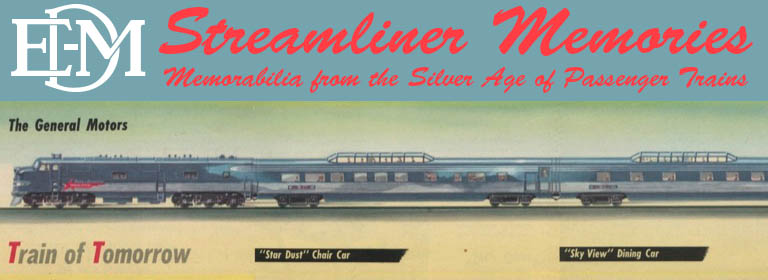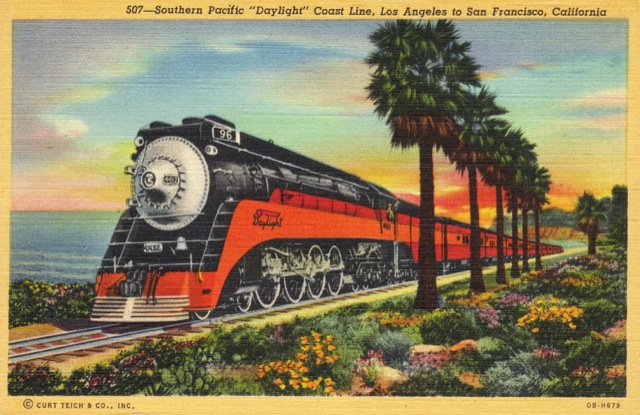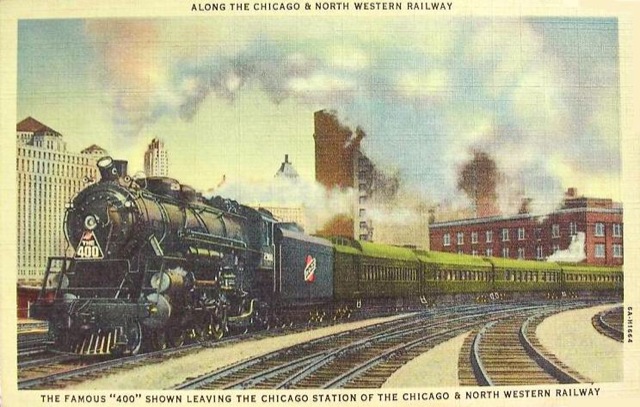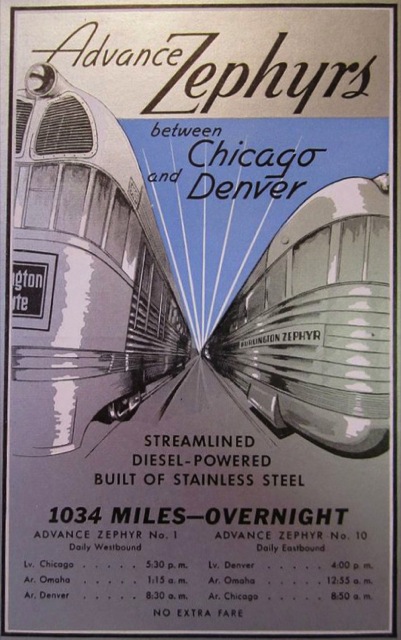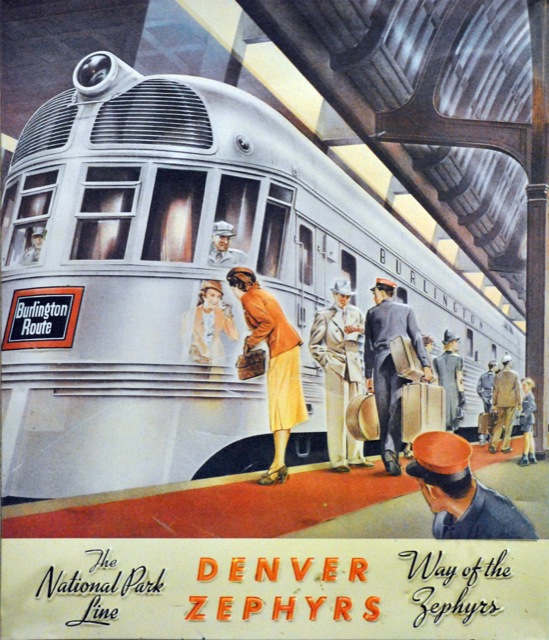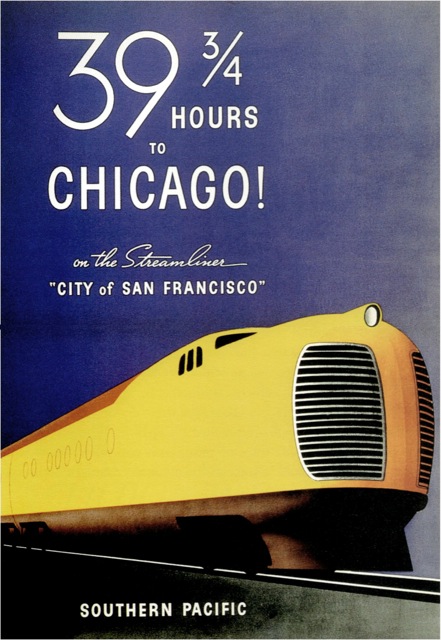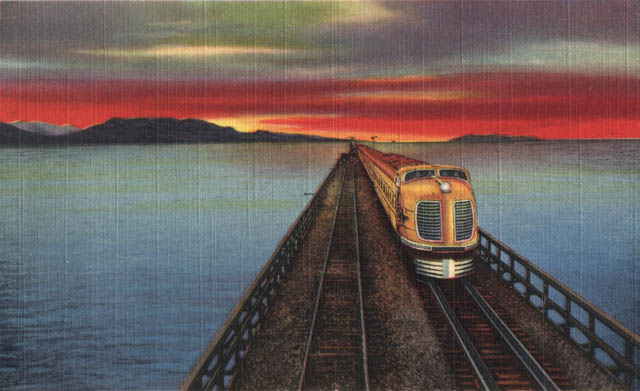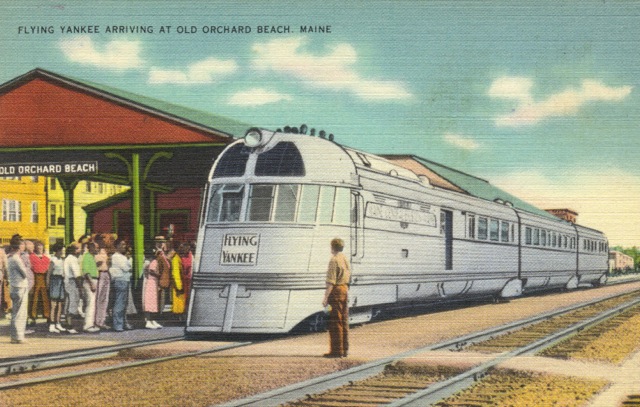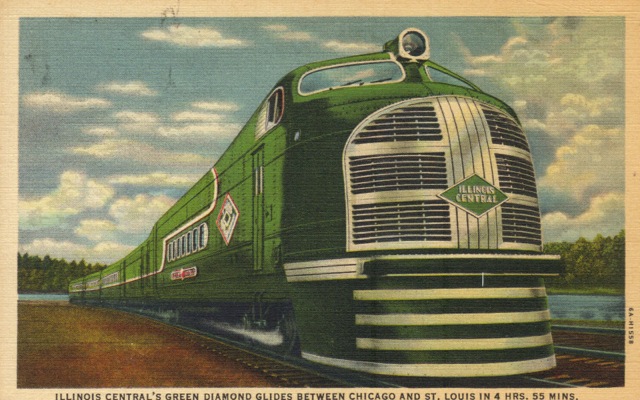On March 21, 1937, the Southern Pacific inaugurated the Daylight between Los Angeles and San Francisco. Like the Milwaukee Hiawatha, the SP elected to go with steam power, in this case a semi-streamlined 4-8-4 locomotive manufactured by Lima, the smallest of the nation’s three major steam locomotive makers. The cars were built by Pullman and included several articulated coaches, an articulated diner/lunch counter car, a parlor car, and a parlor-observation car, with a total capacity of 444 revenue passengers.
Click the image to see a larger version of this postcard. Click here to download a PDF of the front and back of this postcard.
At an average speed of 48 mph, the Daylight was not a speed demon like the Hiawathas. But it was probably competitive with California roads at the time.
